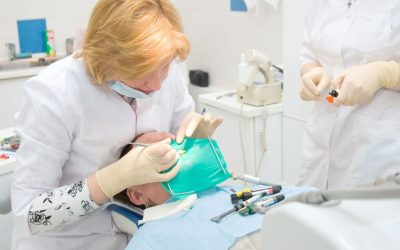Oregon dental patients may face circumstances in which a tooth is damaged severely. When this is the case, they need immediate assistance to relieve their pain and reduce the probability of tooth loss. A root canal treatment in Sutherlin OR is the last resort used to correct these conditions.
Why is a Root Canal Performed?
A root canal is performed when a damaged tooth becomes too painful for the patient. The procedure allows the dentist to address nerve pain and reduce the onset of more symptoms. The dentist may choose to perform a root canal based on the level of pain experienced by the patient. They may also choose this option to prevent the total loss of the tooth.
How is the Procedure Performed?
The dentist drills into the tooth to create an opening. Next, they remove the pulp from inside the tooth. The dentist cleans out the tooth to ensure that no debris is left behind. Next, they inject a composite resin into the tooth to seal it off. Select dentists may install a crown and an abutment onto the tooth to protect the tooth from more damage.
What is the Patient’s Outlook?
The patient can expect the results of the root canal to last for a long time. However, if the patient doesn’t acquire proper oral care, they reduce their chances of saving the tooth in the future. If they smoke, they also increase the chances of more damage to the tooth.
Is a Root Canal Covered Under Insurance?
Yes, root canal surgery is covered under most major dental insurance plans. However, it is considered surgery and may require the patient to fulfill their deductible before coverage starts. The patient should get the dentist to evaluate their coverage before getting the surgery.
Oregon dental patients may face a variety of situations that may require surgery. Nerve damage and pain are among the most common reasons that a root canal procedure is performed. Dentists use this procedure to save damaged teeth. Patients who may need Root Canal Treatment in Sutherlin OR should contact their preferred dentist or click here for further details now.


